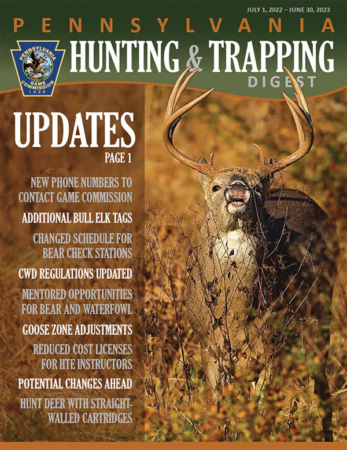It’s not unusual to have someone tell me that reading through the Game Commissions regulation handbook can sometimes be very challenging, especially if it’s someone new to the business of hunting and trapping. There’s a lot to digest with figuring out starting and quitting times, what can be hunted and when, boundary differences, exceptions for different age groups, and more. Well, don’t get too excited, but some simplifications are coming to the regulations or at least a few select areas.
First off, the commission has approved some changes to fall turkey hunting regulations. These changes not only simplify regulations, but it is also hoped that the changes will help with adjustments intended to meet turkey population goals. With lower turkey populations, the Game Commission eliminated the use of centerfire and rimfire rifles in the fall season this past year. Statistics showed that about one-third of the fall turkey harvest was with centerfire and rimfire rifles, so it was hoped that such a change would help the turkey population without any changes to the length of seasons.
Now, in addition to the changes already in place, the Game Commission has adopted a new regulation that eliminates the use of all other single-projectile firearms for fall turkey hunting; in other words, muzzleloading rifles, handguns, and slug guns. Once this change officially goes into effect, only shotguns and archery gear will be permitted for turkey hunting throughout the state in any season. Apparently, less than one percent of the hunters used these guns for fall turkey hunting, but as a turkey hunter myself, it makes me feel more comfortable in the woods knowing that there’s at least not going to be a solid hunk of lead coming in my direction while calling a turkey.
The mention of muzzloaders in the previous paragraph brings to mind another potential change that may be coming. If you are not into muzzleloading, some of this may seem a little perplexing; but simply put, to load a typical muzzleloader, you pour your powder down the muzzle and then insert your projectile and shove it down the barrel. To unload that muzzleloader, you must fire off the round to empty the gun. Now there is a “cartridge” or a captured or contained powder charge that can be loaded from the breech and not the muzzle. Because of this type of loading, they have been prohibited, but they may now become legal. The original restriction was intended to restrict modern firearms that accept cartridges containing both projectile and powder.
I’m sure these changes won’t bring a major change to the size of the regulation manual, but it does help simplify a few items. In the meantime, I keep checking mine for times and what’s in season, and where can I hunt it.




